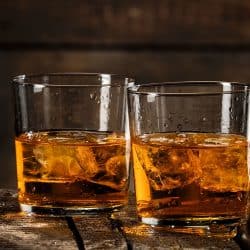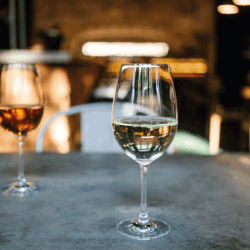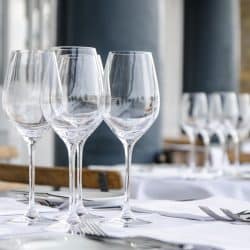There are almost as many varieties of a wine glass as there are of the wine itself. Different shapes, sizes, and styles abound, but does the thickness of the wine glass really matter? We've done the research, and this is what we've found.
To get the most from your wine, it's best to serve it in thin wine glasses. Thin wine glasses make it easier to enjoy small sips of wine, improving the aroma. They also help you better appreciate the color of the wine in the glass. Additionally, thin wine glasses are more likely to be made with quality materials and methods.
Continue reading to learn more about why the thickness of the glass matters, what research has said about wine glasses and flavor, and how to pick your very own high-quality wine glasses.
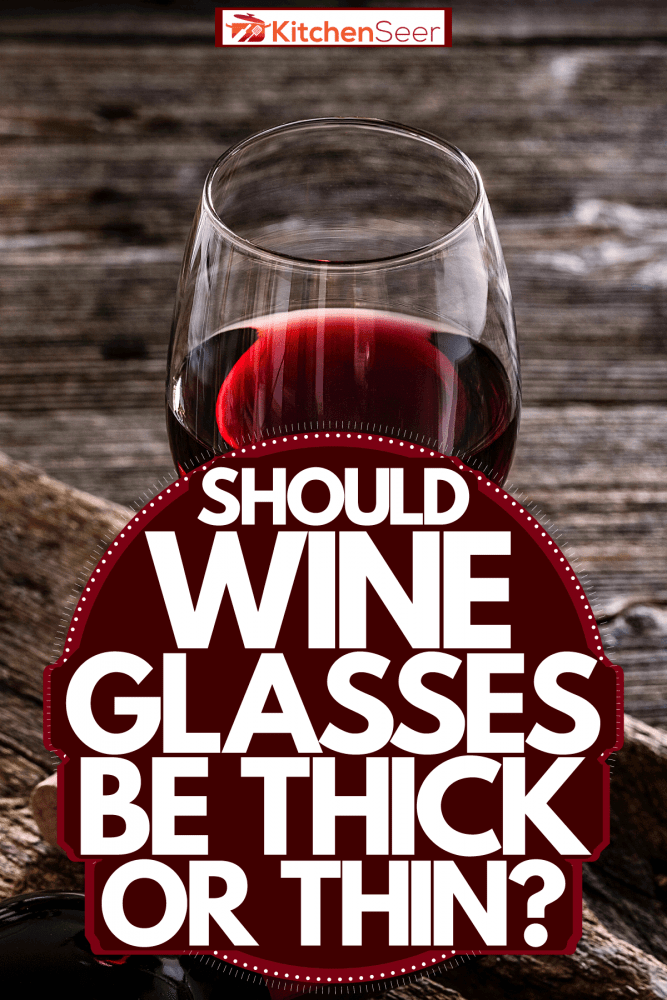
How thick should a wine glass be?
Essentially, you want your wine glasses to be as thin as possible. Thin glasses will let the light pass through with less refraction, meaning that you will see more clearly through the glass. This may seem purely aesthetic, and it certainly does contribute to the aesthetic experience, but it also helps you know more about the wine, particularly red wines.
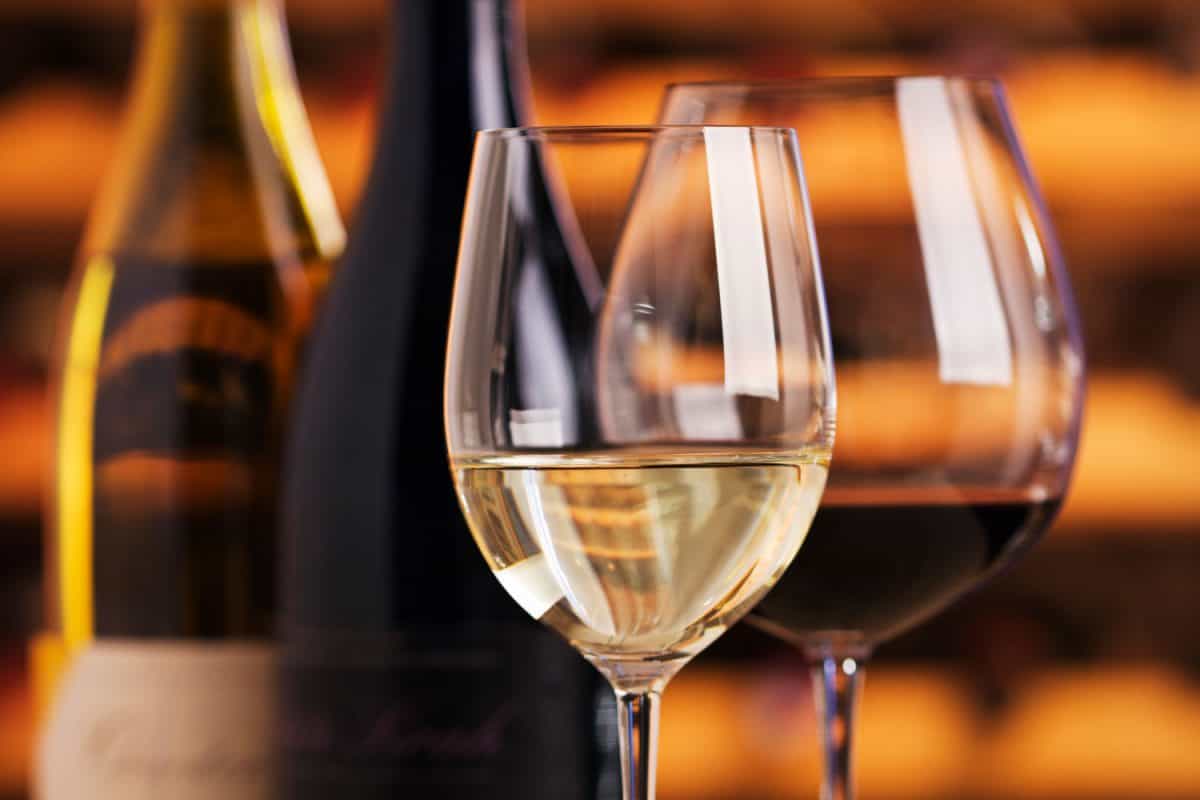
Different varieties of grapes, growing conditions, and aging processes will affect the color of your wine. A thin glass will help you see, understand, and appreciate those differences.
For casual drinking, this might not be so important. If you want to learn more about different types of wine and what qualities you enjoy the most, thin glasses with greater clarity will help you on your way.
Does glass thickness affect the taste of wine?
Enjoying the color of each bottle you buy isn't the only reason to opt for thinner glasses. Thin wine glasses can also enhance the aroma of your wine. Well, sort of.
Thin glasses make it easier to take small sips of wine. Besides maintaining an appearance of suave sophistication, enjoying wine in sips allows the subtle aromas of wine to come through. To understand why this is, it's useful to know more about the nature of wine aromas.
Sip to Savor Wine Aroma
The flavor and aroma of wine can be notoriously complex. There are three types of wine aroma, all from different stages of the wine-making process: primary, secondary, and tertiary.
Primary aromas come directly from the grapes. The variety of grape, the ripeness when picked, and the growing conditions all affect these aromas. Secondary aromas are those that come from the fermentation and barrel-aging process.
Tertiary aromas, often referred to as a wine's bouquet, are developed as the wine ages in the bottle. As the wine sits in the bottle (and in the glass), compounds acquired during the wine-making process interact with oxygen and each other, creating complex and subtle notes.
These aromas, and particularly tertiary aromas, need contact with oxygen to aerate and be enjoyed. Taking small sips of wine increases the amount of contact with the air these flavor compounds get, enhancing the flavors and your ability to appreciate them.
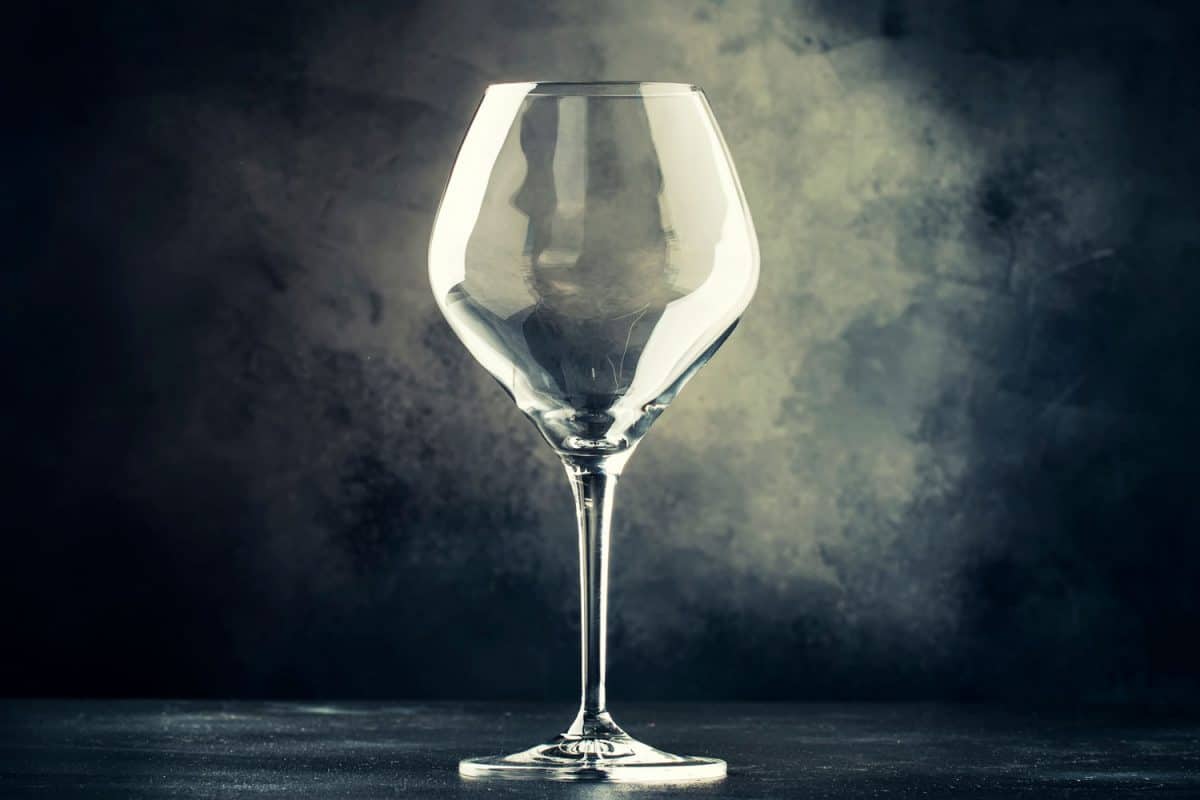
How can you tell a good quality wine glass?
We have seen that the thickness of a wine glass can affect your drinking experience, but is it an indication of quality? The answer is not quite that simple, but a few factors can determine glass quality.
Clarity
First, check how the light passes through the glass. If you notice any bubbles or a blue-green hue in the glass, this is a sure sign the glass contains lower-quality materials. Crystal and crystalline glass will both allow the light to pass through clearly and brilliantly.
Rim
Next, inspect the rim. While the overall thinness of the glass is important for enjoying the color of the wine, it is the rim that will affect how easy those small sips we described early will be.
Ideally, the rim should be thinner than the rest of the glass. These days manufacturers use lasers to cut the rim of the glass. That thin rim is a good sign of quality. If the rim appears rounded and thicker than the glass below, it may still be a fine glass, just not as high quality.
Weight
Another factor to consider is the glass' weight. While crystal, which typically contains lead, is actually denser than more conventional glass, it can also be blown thinner, resulting in a lighter overall glass.
One way to tell if the glass is crystal is to tap the bowl with your fingernail. Crystal will ring brilliantly, like a bell, while cheaper glasses will give only a short ding. Besides its thinness, another advantage of crystal is that it is more durable than conventional glass, so thinness will not necessarily equate to more fragility.
When checking the weight, also be sure to see how the distribution of the weight. You want a glass with a base that is heavier than the bowl. This prevents the glass from getting overly top-heavy and prone to tipping over.
That being said, also make sure that the balance feels good in your hands. This may vary to some extent from person to person, but remember, you are looking for the best quality wine glass for you and your drinking experience.
Following this advice will help you test the quality of a wine glass on your own, but it's always a good idea to go to a reputable shop with knowledgeable staff who can help you choose the best glasses for your own needs.
Do expensive wine glasses make a difference?
If you follow the advice above, you may find yourself thinking over a nice set of crystal wine glasses with laser-cut rims. Glasses that fit this description are not going to be the lowest price point available, but they don't have to be restrictively expensive either. Reasonably priced sets that meet these standards are available, such as this one:
Click here to these crystal wine glasses on Amazon
To learn more about finding the right wine glasses to meet any budget, check out our full breakdown of this topic, Are Expensive Wine Glasses Worth the Investment?
Why are thin wine glasses more expensive?
Thin wine glasses come with a heavier price tag than their thicker brethren for a variety of reasons. One is the material. You may think that because thin wine glasses require less glass, they should be cheaper. The problem is that not all glass is alike.
Manufacturers make thick wine glasses with soda-lime glass, the same stuff they use to make windows and pickle jars. Glass made with these cheaper materials is more brittle than crystal or crystalline glass. Because of this, it simply cannot be blown as thin. This is also why, despite being thicker and ostensibly sturdier, cheap wine glasses tend to break more easily than expensive ones made with quality materials.
Another factor is how the glass is produced. If you opt for hand-blown glass made by a skilled artisan, they are going to be able to make a razor-thin glass, but it will cost you dearly. Most wine glasses on the market today, even those from highly reputable brands, are machine-blown.
These days, that is not a problem for quality, as machine blowing techniques have advanced a lot and are continuing to do so. Still, machines that can blow thin wine glasses are more specialized, and the consumer is ultimately the one who pays for that cost.
Can you drink wine in a normal glass?
We've all been there, at the end of a long day, exhausted, wanting to unwind with a nice glass of sauvignon blanc, only to find none of the wine glasses are clean. Wash and dry one by hand? Who has the energy? You may be tempted to reach for any old drinking glass, but is that really okay?
The short answer is: of course! The main flavor of your wine will still come through in a water or rocks glass or even a coffee cup in particularly tough times. And, of course, the unwinding effects of the alcohol will be unaffected too. The longer answer is, predictably, more complicated.
Glass shape and aroma
While wine will still taste like wine in a water glass, the shape of wine glasses allows more aromas to come through. This is much easier to accomplish with a wine glass than a typical drinking glass.
Different shaped wine glasses even affect which aromas come through. This might seem like hyperbole or snobbery, but it has been borne out in research. While differences between wine glasses don't appear to affect aroma immediately, after five minutes, the researchers found that Bordeaux glasses, those with wide bottoms that taper to narrow openings, enhanced the fruitiness and overall intensity of the wine's aromas.
Glass shape and color
Another thing to remember is that the other glasses in your cabinet are almost certainly thicker than your wine glasses. For all the reasons we discussed above, about sipping and enjoying the color of your wine, this thickness will make a difference.
The shape of the glass will affect your ability to perceive the color of the wine. The curve and taper of wine glasses don't just contribute to waking up the aromas of your wine; they also allow you to create a very thin layer of wine while tilting the glass.

This lets the light shine through, revealing the bright ruby of a pinot noir or the rich violet of a shiraz. The straight sides of your average drinking glass simply cannot accomplish this.
Pop Open a Bottle
People have been enjoying wine for thousands of years, and so should you. We've seen that, though it might not be necessary for tossing back a glass, stemware that features thin glass can help you better appreciate your wine's unique color and aroma.
To learn about keeping your wine glasses, thick and thin alike, safe and accessible, be sure to check out our other article, How to Store Wine and Cocktail Glasses.




